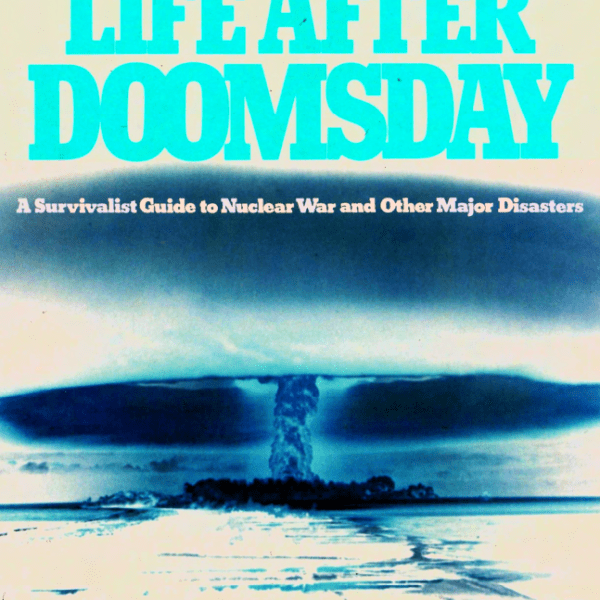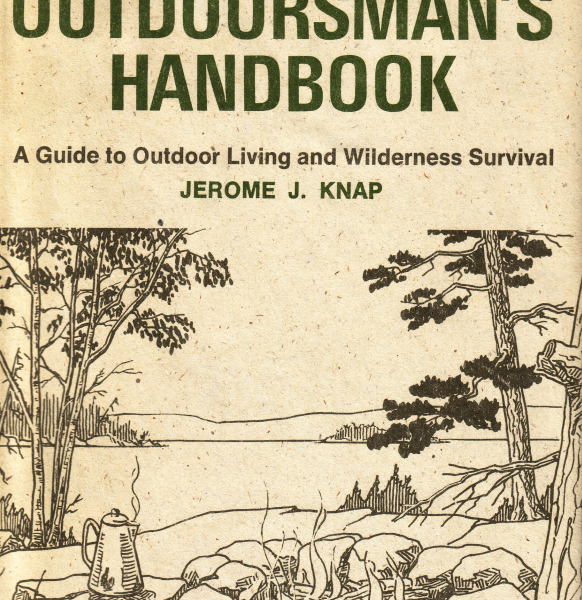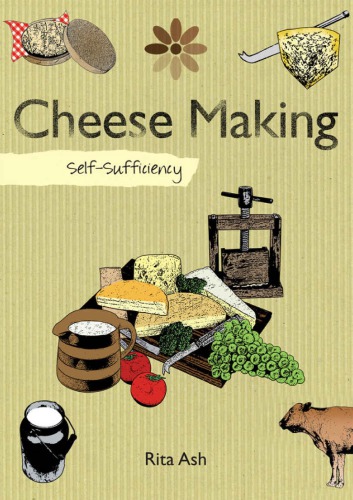Your Family Disaster Supplies & Preparedness Calendar
The Family Disaster Supplies & Preparedness Calendar is intended to help you take appropriate preparedness actions and create a 3–7 day disaster supply kit before the next emergency happens. Using the calendar, your family can assemble an emergency kit in small steps over a six four to month period. Check off each of the items you collect or the actions you take during the week. Supplies may be stored all together in a large plastic garbage can with wheels, putting the heavy items at the bottom. When medical supplies, flashlights and emergency items are placed near the top, they can be located quickly for inspecting and restocking. Remember to rotate your perishable supplies and change water every six months. Review this calendar every six months. For example, each time you change your clock, review this list. Note: You should store 1–2 gallons of water per person for each day. This water is for consumption and sanitation. For this reason the calendar repeats the need to purchase water several times.
If you would like to print this Family Preparedness Calendar you can do so by downloading the PDF HERE
Month 1
Week 1
Grocery Store Checklist
- ☐ 1 gallon of water*
- ☐ 1 jar peanut butter*
- ☐ 1 large can juice*
- ☐ Hand-operated can opener
- ☐ Instant coffee, tea, powdered soft drinks
- ☐ Permanent marking pen (to mark dates on cans & bottled water)
- ☐ 1 gallon of water for each pet
- ☐ Pet food, diapers, and/or baby food (if needed)
To Do
- ☐ Establish an out-of-state contact in case of disaster.
- ☐ Prepare a list of important phone numbers: out-of-state contact, physicians, veterinarian, family, creditors, insurance, etc.
- ☐ Make a family plan. Follow guidance from the Workbook or Red Cross brochures.
Week 2
Hardware Store Checklist
- ☐ Crescent wrench
- ☐ Heavy rope
- ☐ Duct tape
- ☐ 2 flashlights with batteries
- ☐ Bungee cords
- ☐ Waterproof matches
To Do
- ☐ Check your house for hazards (Follow the “Reduce Hazards” booklet or Red Cross brochures).
- ☐ Identify and prioritize hazards to reduce first.
- ☐ Locate gas meter and water shutoffs, and attach the proper tool near each.
- ☐ Obtain a collar tag or microchip for your pet for emergency identification.
Week 3
Hardware Store Checklist
- ☐ Plumber’s tape
- ☐ Crowbar
- ☐ Smoke detector with battery
- ☐ Tarp
- ☐ Extra medications or prescriptions marked “emergency use” (if needed)
To Do
- ☐ Install or test your smoke/fire/carbon monoxide detector. Replace batteries as needed.
- ☐ Secure your water heater to wall studs (Follow the “Reduce Hazards” booklet diagrams).
Week 4
Grocery Store Checklist
- ☐ 1 gallon of water*
- ☐ 1 can meat*
- ☐ 1 can fruit*
- ☐ Sanitary napkins
- ☐ Video tape
- ☐ 1 gallon of water for each pet
- ☐ Pet food, diapers, and/or baby food (if needed)
To Do
- ☐ Use a video camera to tape the contents of your home for insurance purposes.
- ☐ Store the video tape with a friend or family member who lives out of town.
- ☐ Investigate home or rental insurance.
- ☐ Date each can of food using a marking pen for easy tracking and rotation.
Month 2
Week 5
Grocery Store Checklist
- ☐ 1 gallon of water*
- ☐ 1 can of meat*
- ☐ 1 can of fruit*
- ☐ 1 can of vegetables*
- ☐ 2 rolls of toilet paper*
- ☐ Extra toothbrush*
- ☐ Personal hygiene items (toothbrush, comb, etc.)
- ☐ Travel-size toothpaste
- ☐ Special food for special diets
To Do
- ☐ Have a fire drill at home.
- ☐ Ask your veterinarian about the appropriate size container for evacuating pets.
(Veterinarians may have information on used containers.)
Week 6
First Aid Supplies
- ☐ Aspirin and/or acetaminophen
- ☐ Compresses
- ☐ Rolls of gauze or bandages
- ☐ First aid tape
- ☐ Adhesive bandages in assorted sizes
- ☐ Cold packs
- ☐ Extra hearing aid batteries, if needed
To Do
- ☐ Check your child’s daycare or school for their disaster plans.
- ☐ Take a first aid/CPR class.
- ☐ Purchase a camp stove and fuel to boil water as needed.
Week 7
First Aid Supplies
- ☐ Scissors
- ☐ Tweezers
- ☐ Antiseptic
- ☐ Thermometer
- ☐ Disposable hand wipes
- ☐ Sewing kit
- ☐ Waterproof plastic container for first aid supplies
To Do
- ☐ Send family and pet photos (or copies) to family members out of state for safekeeping.
Week 8
Grocery Store Checklist
- ☐ 1 gallon of water*
- ☐ 1 can ready-to-eat soup (not concentrate)*
- ☐ 1 can of fruit*
- ☐ 1 can of vegetables*
- ☐ Extra plastic baby bottles, formula, and diapers, if needed
To Do
- ☐ Research how to become a licensed ham radio operator.
Month 3
Week 9
Grocery Store Checklist
- ☐ 1 gallon of water*
- ☐ 1 can ready-to-eat soup (not concentrate)*
- ☐ Liquid dish soap
- ☐ 1 quart plain liquid bleach
- ☐ 1 box heavy-duty garbage bags
- ☐ Saline solution and contact lens case (if needed)
To Do
- ☐ Place hard sole shoes and a flashlight under your bed for easy access during an earthquake.
Week 10
Hardware Store Checklist
- ☐ Waterproof portable plastic container (with lid) for important papers
- ☐ Portable AM/FM radio (with batteries)
- ☐ 1 flashlight (with batteries)
- ☐ Space blankets, blankets, or sleeping bag for each family member and pet
To Do
- ☐ Make photocopies of important papers and store them safely.
- ☐ Update animal vaccination records and store them with important papers.
Week 11
First Aid Supplies
- ☐ Anti-diarrhea medicine
- ☐ Rubbing alcohol
- ☐ 2 pairs of latex gloves
- ☐ Ipecac syrup and activated charcoal (for accidental poisoning)
- ☐ Children’s vitamins
- ☐ Items for denture care (if needed)
To Do
- ☐ Take your family on a field trip to your main electrical panel, gas meter, and water shutoff.
- ☐ Demonstrate how to turn off each. If the valves don’t move, contact the utility company for repair.
Week 12
Grocery Store Checklist
- ☐ 1 gallon of water*
- ☐ 1 large can of juice*
- ☐ Large plastic food bags
- ☐ 1 box of quick energy snacks
- ☐ 3 rolls of paper towels
- ☐ ¼ teaspoon (or 1ml) measuring device for using bleach to treat water
- ☐ Sunscreen (if needed)
To Do
- ☐ Store a roll of quarters, extra cash, and credit cards for emergency use.
- ☐ Go on a hunt with your family to locate the nearest pay phone.
Month 4
Week 13
Hardware Store Checklist
- ☐ Whistle
- ☐ ABC Fire extinguisher
- ☐ Pliers
- ☐ Vise grips
- ☐ Local area map
- ☐ Hand warmers
- ☐ Extra batteries for radio and flashlight
To Do
- ☐ Find out if your neighborhood has a safety organization and join it.
Week 14
Grocery Store Checklist
- ☐ 1 can meat*
- ☐ 1 can vegetables*
- ☐ 1 box large heavy-duty garbage bags
- ☐ Kleenex
- ☐ 1 box quick energy snacks (granola bars or raisins)
To Do
- ☐ Make a plan to check on a neighbor who might need help during an emergency.
Week 15
Hardware Store Checklist
- ☐ Extra flashlight batteries
- ☐ Masking tape
- ☐ Hammer
- ☐ “L” brackets or flexible straps to secure tall furniture to wall studs
To Do
- ☐ Brace shelves and cabinets.
- ☐ Secure fish tanks, birdhouses, and reptile cages.
Week 16
Grocery Store Checklist
- ☐ Large plastic food bags
- ☐ Plastic wrap
- ☐ Aluminum foil
- ☐ Extra hand-operated can opener
- ☐ 3 rolls paper towels
- ☐ 1 can fruit*
- ☐ 1 can meat*
- ☐ 1 can vegetables*
- ☐ 1 package paper plates*
- ☐ Eating utensils
- ☐ Package of paper cups
- ☐ Adult vitamins
To Do
- ☐ Develop a neighborhood pet care plan.
Create a Family Disaster Supplies Kit
- Review the Emergency Preparedness Workbook for important guidelines and recommendations.
- Take inventory of the supplies you already have at home.
- Decide where to store your emergency supplies. Consider storing food together in a container or on shelves for easy rotation.
Family Emergency Planning
- Discuss potential disasters and how to prepare and respond to each situation.
- Create a plan for evacuation in case of an emergency.
- Practice your emergency plan regularly.
- Review your plan and emergency supplies every six months. Start from month one and rotate or supplement your supplies as needed.
Recommended Emergency Foods
Choose foods based on your family’s needs and preferences. Opt for low-salt and water-packed options when possible.
- Canned Meat: Tuna, chicken, ravioli, chili, beef stew, spam, corned beef, etc.
- Vegetables: Green beans, corn, peas, beets, kidney beans, carrots, etc.
- Fruits: Pears, peaches, mandarin oranges, applesauce, etc.
- Cereal: Cheerios, Chex, Kix, Shredded Wheat, etc.
- Quick Energy Snacks: Granola bars, raisins, etc.
Remember to rotate emergency supplies every six months.
Food Storage Tips for Emergency Supplies
- Store food in a cool, dry place, ideally a dark area.
- Keep all food items covered when not in use.
- Carefully open food containers so you can reseal them tightly.
- Store cookies or crackers in a plastic bag, then place them in an airtight container.
- Transfer opened packages of sugar, dried fruits, and nuts into airtight jars to protect from pests.
- Inspect all food for spoilage before consumption.
- Use foods before they spoil, and replace them with fresh items.
- Label all foods with the purchase date. Use older items first by placing them at the front of your storage area.







